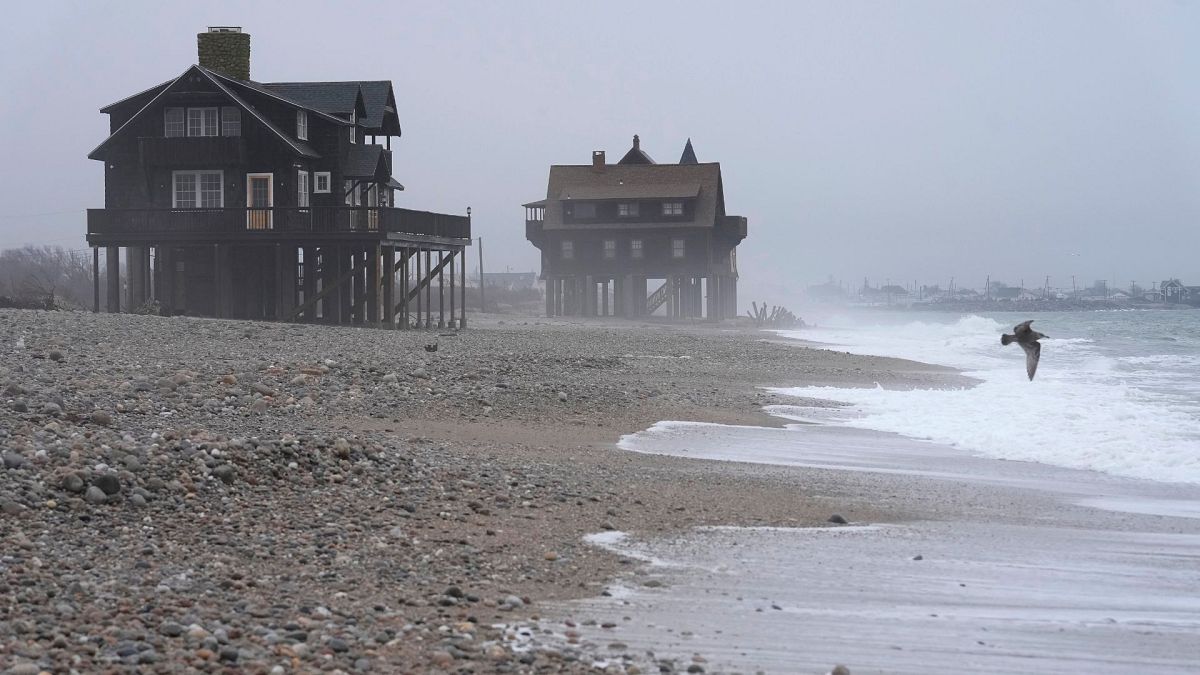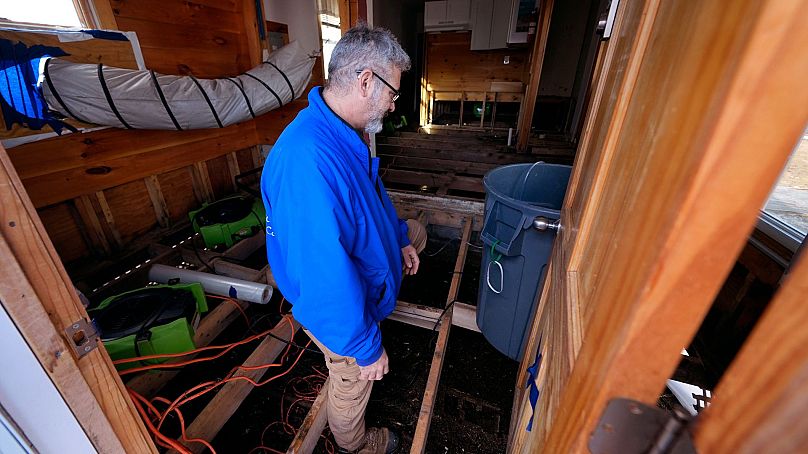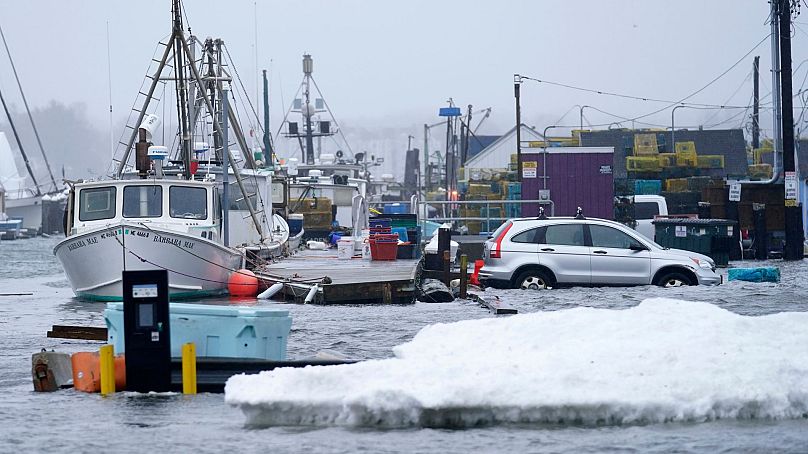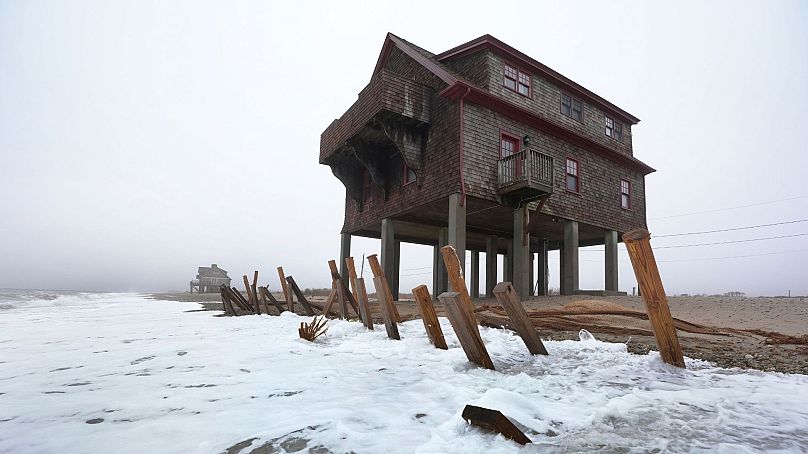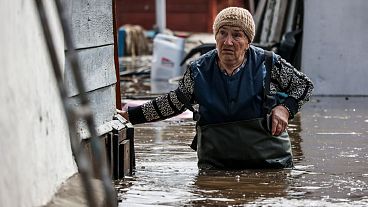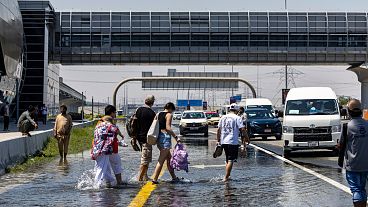”I think that retreat is probably the best option,” says one Rhode Island resident.
Back-to-back storms lashed the US Northeast in January, leaving coastal homes in tatters.
Rental properties in Hampton, New Hampshire, owned by Haim Levy were hammered by nearly 60 cm of water, resulting in hundreds of thousands of dollars in damage and causing him to evacuate tenants to safer ground.
“I put them in hotels and everything. So it was brutal, for everybody. And at the apartment I have no floors; I have nothing,” says Levy. “It's not fun.”
Many scientists who study the intersection of climate change, flooding, winter storms and sea level rise agree the kind of damage Levy experienced was more of a sign of things to come than an anomaly.
They say last month's storms that destroyed wharfs in Maine, eroded sand dunes in New Hampshire and flooded parts of New Jersey still coping with hurricane damage from years ago are becoming more the norm than the exception, and the time to prepare for them is now.
Storms and sea level rise threaten homes in US Northeast
Climate change is forecast to bring more hurricanes to the US Northeast as waters warm, some scientists say. Worldwide, sea levels have risen faster since 1900, putting hundreds of millions of people at risk, the United Nations has said. Erosion from the changing conditions jeopardises beaches the world over, according to European Union researchers.
Another storm brought flooding to Massachusetts and New Hampshire on Tuesday. In the Northeast, the problem of climate change is especially acute because of forecasted sea level rise, says Hannah Baranes, a coastal scientist with the Gulf of Maine Research Institute's Climate Center in Portland, Maine. The state has already experienced 19 centimetres of sea level rise since 1910 and is projected to have to manage 1.2 metres by 2100, she says.
These rising seas mean communities in coastal New England will need to make hard choices about when it's responsible to rebuild, Baranes says. January's storms, which flooded streets and washed away historic buildings, are a good example of the “type of severe event we need to be prepared for”, she warns.
“This is a real moment to consider how much flooding is in several feet of sea level rise,” says Baranes. “And to consider when to rebuild, and in some cases whether to rebuild at all.”
Waterfront businesses are threatened by worsening storms
The storms caused damage that coastal communities in several states are still struggling to clean up. President Joe Biden also recently issued a federal disaster declaration for some communities damaged by a wind and rainstorm in December.
January's onslaught was devastating for working waterfront communities in Maine where dozens of docks, buildings and wharfs were damaged or destroyed, says Patrick Keliher, commissioner of the state's Department of Marine Resources. He says the combination of back-to-back storms in the second week of January and high tides brought “damage like we have never seen before” in a state where waterfront industries such as commercial fishing are vital economic cogs.
Waterfront business owners have vowed to rebuild. But Democratic Governor Janet Mills told the Maine Climate Council that the storms also provided a stark lesson that “resilience is not just repairing and rebuilding physical infrastructure”.
The governor tasked the council with developing a plan to address the impacts of climate change in the state. That could include strategies such as rebuilding piers higher than they used to be, planting more trees along waterfronts and constructing newer, more durable culverts, bridges and roads, speakers said at a January climate council meeting.
“It's easy to think maybe this one storm was just an aberration. Or maybe the three storms we've had are just three off,” said Mills. “But what do we do about the future? We're not just talking about riprap and wharfs, we're talking about being ready in many ways.”
Inland communities are also affected by flooding
Even inland communities aren't immune to flooding from weather events like the January storms. The storms stirred bad memories of Vermont's summer storms that brought devastating flooding while causing new damage in some areas, said Julie Moore, secretary of the Vermont Agency of Natural Resources.
Vermont, which also suffered heavy damage in Hurricane Irene in 2011, is working to establish statewide floodplain standards, Moore told the Maine Climate Council.
Winter flooding brought “a lot of post-traumatic stress, frankly, in Vermont,” but there is also a sense that there is hope to prepare for the future, Moore said. “We have a unique opportunity that hasn't presented itself since Irene.”
How are communities preparing for more frequent storms?
Preparing for a future of stronger storms, worse flooding and increased erosion will make for difficult choices in many coastal areas. In New Jersey, the resort town of North Wildwood has carried out emergency repairs to its protective sand dunes without approval from the state government - and they're locked in a legal battle.
In Rhode Island, the RI Coastal Resources Management Council is encouraging the state's many coastal home and business owners to elevate structures and move landward whenever possible, says Laura Dwyer, the council's public education and outreach coordinator.
“People have always been drawn to the water and coast, and will continue to be," says Dwyer. “We need to be smart about development, recognising that sea level is rising at an unprecedented rate and storms are becoming more frequent and severe.”
The ocean is creeping ever closer to places people live
But after the January storms, a heavily damaged house that tilted into the ocean in Narragansett, Rhode Island, signalled to some that with the world’s changing climate the ocean is creeping ever closer to places people live.
For Conrad Ferla, a resident of nearby South Kingstown, the house was a harbinger of a future of heavy storms and dangerous flooding in the region that will require more than plywood, riprap and sandbags to be ready.
“I do think that a lot of properties along the shore should move to higher ground,” says Ferla, who started a group called Saving RI Coastal Access/Rights Of Way and advocates for a cautious approach to coastal building. ”I think that retreat is probably the best option.”
